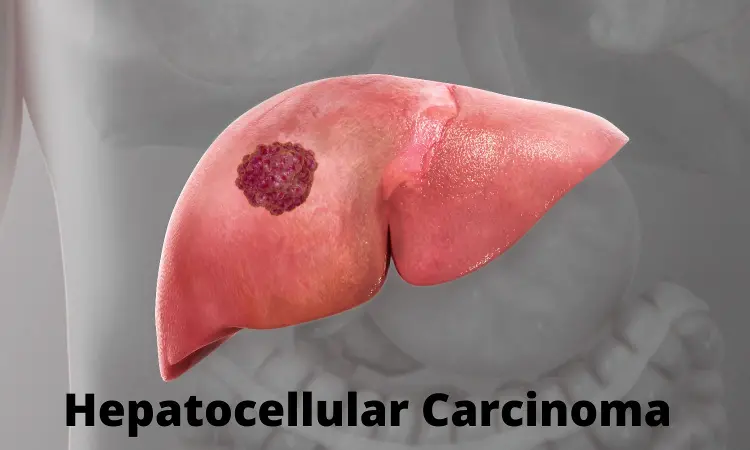- Home
- Medical news & Guidelines
- Anesthesiology
- Cardiology and CTVS
- Critical Care
- Dentistry
- Dermatology
- Diabetes and Endocrinology
- ENT
- Gastroenterology
- Medicine
- Nephrology
- Neurology
- Obstretics-Gynaecology
- Oncology
- Ophthalmology
- Orthopaedics
- Pediatrics-Neonatology
- Psychiatry
- Pulmonology
- Radiology
- Surgery
- Urology
- Laboratory Medicine
- Diet
- Nursing
- Paramedical
- Physiotherapy
- Health news
- Fact Check
- Bone Health Fact Check
- Brain Health Fact Check
- Cancer Related Fact Check
- Child Care Fact Check
- Dental and oral health fact check
- Diabetes and metabolic health fact check
- Diet and Nutrition Fact Check
- Eye and ENT Care Fact Check
- Fitness fact check
- Gut health fact check
- Heart health fact check
- Kidney health fact check
- Medical education fact check
- Men's health fact check
- Respiratory fact check
- Skin and hair care fact check
- Vaccine and Immunization fact check
- Women's health fact check
- AYUSH
- State News
- Andaman and Nicobar Islands
- Andhra Pradesh
- Arunachal Pradesh
- Assam
- Bihar
- Chandigarh
- Chattisgarh
- Dadra and Nagar Haveli
- Daman and Diu
- Delhi
- Goa
- Gujarat
- Haryana
- Himachal Pradesh
- Jammu & Kashmir
- Jharkhand
- Karnataka
- Kerala
- Ladakh
- Lakshadweep
- Madhya Pradesh
- Maharashtra
- Manipur
- Meghalaya
- Mizoram
- Nagaland
- Odisha
- Puducherry
- Punjab
- Rajasthan
- Sikkim
- Tamil Nadu
- Telangana
- Tripura
- Uttar Pradesh
- Uttrakhand
- West Bengal
- Medical Education
- Industry
Exposure to per- and polyfluoroalkyl substances associated with increased risk of HCC

Recent research revealed that exposure to high levels of per- and polyfluoroalkyl substances was associated with an increased risk of non-viral Hepatocellular carcinoma due to alterations in glucose, amino acid, and bile acid metabolism. The study was published in the Journal JHEP Reports.
Per- and polyfluoroalkyl substances (PFAS) are a class of persistent organic pollutants. Exposure to these is inescapable. Previous literature shows that PFAS exposure in animals has shown an increased risk of fatty liver and hepatocellular carcinoma (HCC) due to its impact on hepatic lipid, amino acid, and glucose metabolism. But there is no similar research on humans. Hence researchers from the U.S.A. conducted a study to examine the associations between PFAS exposure, altered metabolic pathways, and risk of non-viral HCC.
A case-control study was done to measure the prediagnostic plasma PFAS and metabolomics in 50 incident HCC cases and 50 individually matched controls from the Multiethnic Cohort Study (MEC). Cases/controls were matched by age, sex, race, and study area. Using the conditional logistic regression PFAS exposure and risk of HCC were examined. A metabolome-wide association study and pathway enrichment analysis were performed for PFAS exposure and HCC risk, and key metabolites/metabolic pathways were identified using a meet-in-the-middle approach.
Key findings:
- High perfluoro octane sulfonic acid (PFOS) levels were associated with a 4.5-fold increased risk of HCC.
- Pathway enrichment analysis showed that PFOS exposure was associated with alterations in amino acid and glycan biosynthesis pathways, which were also associated with HCC risk.
- Four metabolites linking PFOS exposure with HCC were identified, including glucose, butyric acid, α-Keto isovaleric acid, and 7α-Hydroxy-3-oxo-4-cholestenoate which is a bile acid, each of which was positively associated with PFOS exposure and risk of HCC.
Thus, the researchers concluded from the study that exposure to high PFOS levels was associated with an increased risk of non-viral HCC due to alterations in glucose, amino acid, and bile acid metabolism.
To read the full article, click here: https://doi.org/10.1016/j.jhepr.2022.100550
Goodrich JA, Walker D, Lin X, et al. Exposure to perfluoroalkyl substances and risk of hepatocellular carcinoma in a multiethnic cohort. JHEP Reports. Published online August 2022:100550.
BDS, MDS
Dr.Niharika Harsha B (BDS,MDS) completed her BDS from Govt Dental College, Hyderabad and MDS from Dr.NTR University of health sciences(Now Kaloji Rao University). She has 4 years of private dental practice and worked for 2 years as Consultant Oral Radiologist at a Dental Imaging Centre in Hyderabad. She worked as Research Assistant and scientific writer in the development of Oral Anti cancer screening device with her seniors. She has a deep intriguing wish in writing highly engaging, captivating and informative medical content for a wider audience. She can be contacted at editorial@medicaldialogues.in.
Dr Kamal Kant Kohli-MBBS, DTCD- a chest specialist with more than 30 years of practice and a flair for writing clinical articles, Dr Kamal Kant Kohli joined Medical Dialogues as a Chief Editor of Medical News. Besides writing articles, as an editor, he proofreads and verifies all the medical content published on Medical Dialogues including those coming from journals, studies,medical conferences,guidelines etc. Email: drkohli@medicaldialogues.in. Contact no. 011-43720751




